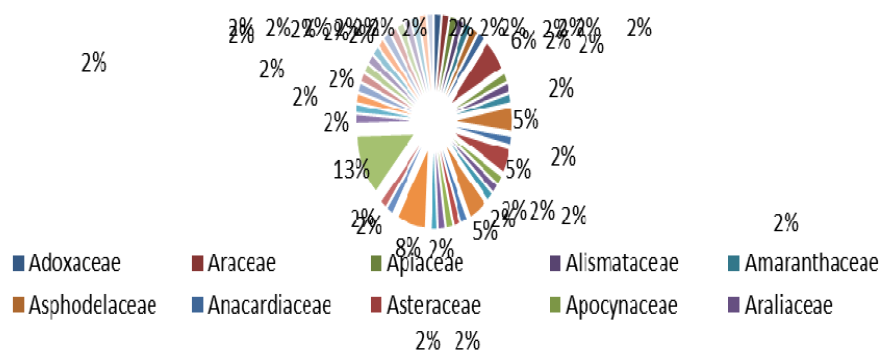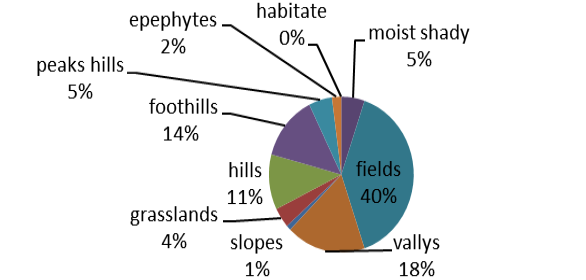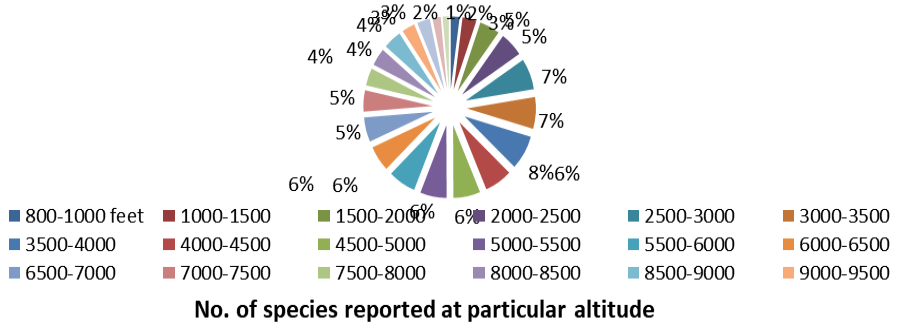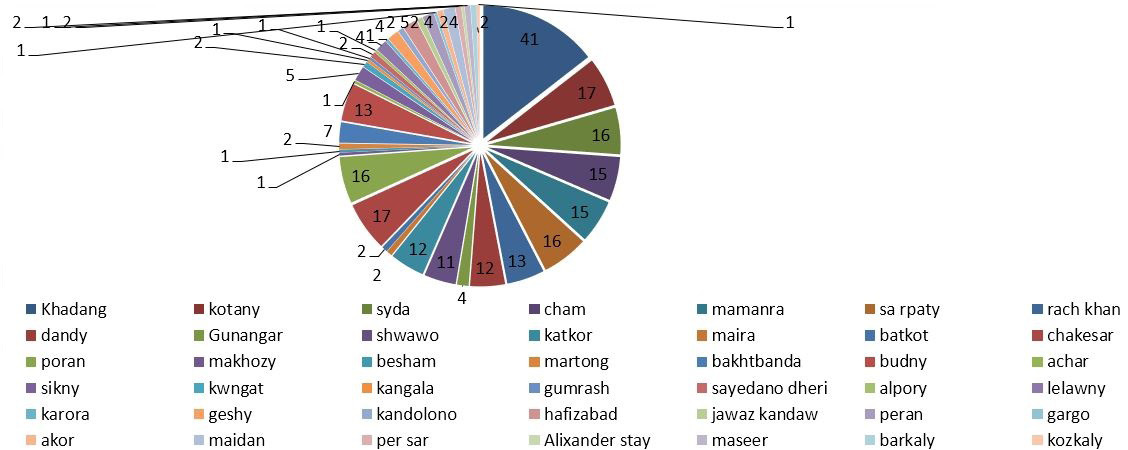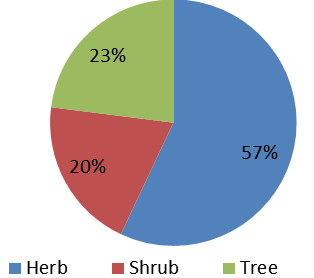Ethnoveterinary and Studies of Khadang Valley Chakesar District Shangla, Khyber Pakhtunkhwa, Pakistan
Ethnoveterinary and Studies of Khadang Valley Chakesar District Shangla, Khyber Pakhtunkhwa, Pakistan
Taqiur Rahman1, Tabassum Yaseen1*, Ali Mujtaba Shah2, Samiullah3, Ghulam Jelani3, Gul Nawaz1,Qudratullah Kalwar2
Family wise distribution of ethno-veterinary plants percentage the whole plants are distributed in about 43 families among which Moraceae, Astreacea and Lamiaceae are dominant.
Habitat distribution of the of ethno-veterinary plants in the study area.
The geographical distribution of ethno-veterinary plants in the study area.
Altitudinal distribution of ethno-veterinary plants in the study area.
Area wise distribution of ethno-veterinary plants in the study area.
Types of the medicinal plants in the study area.






